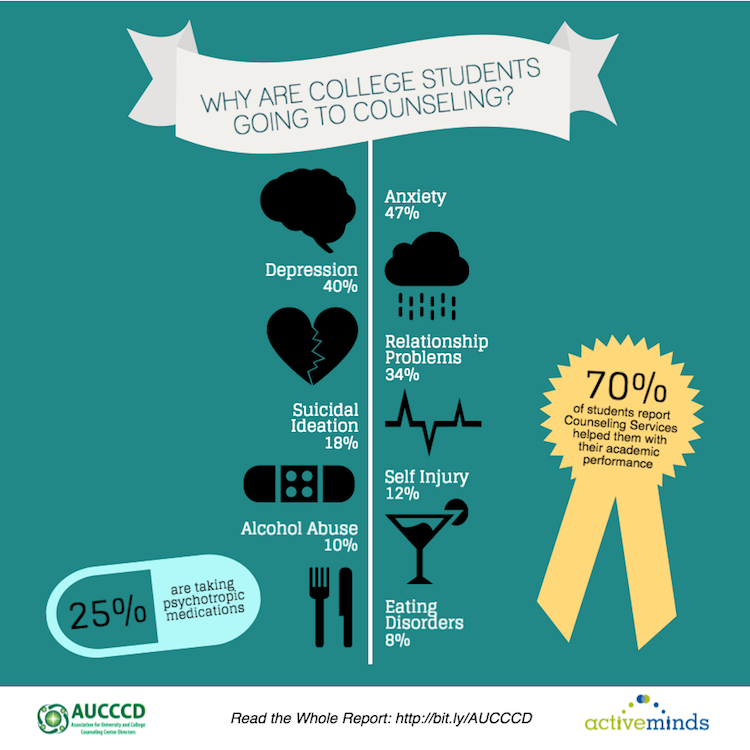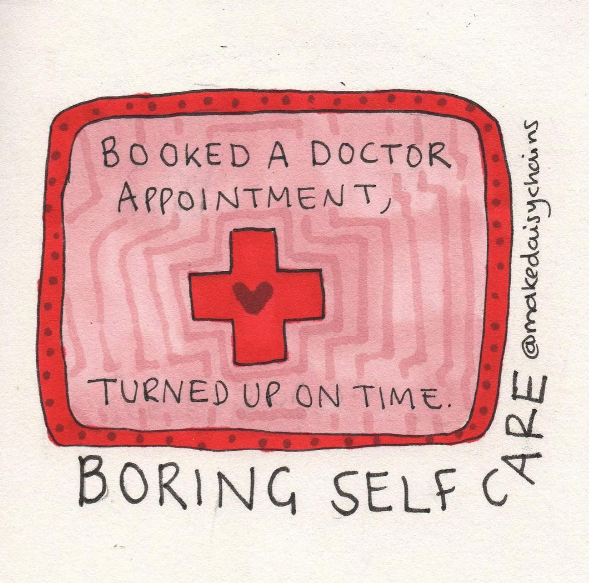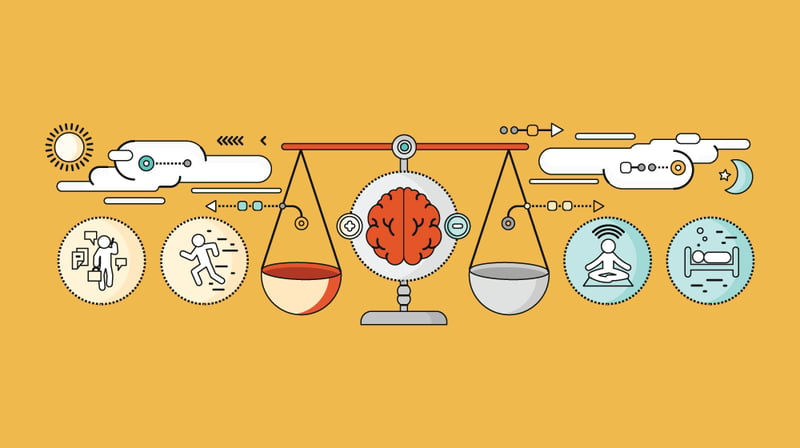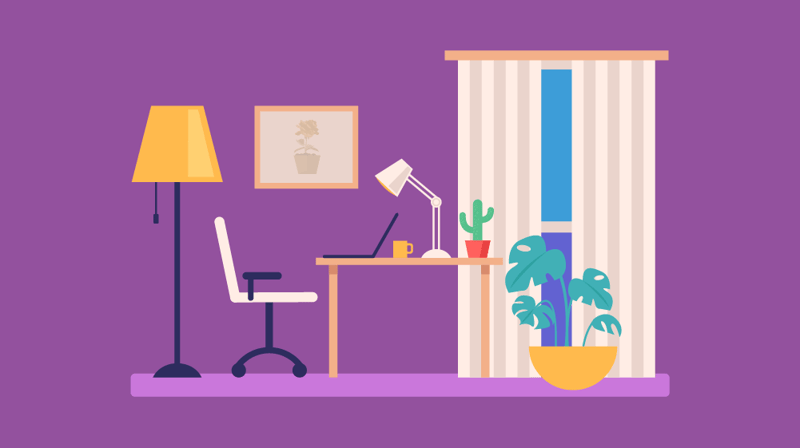If you’re not working a 60-80 hour work week, you’re not working hard enough.
… Or sometimes that’s the myth we’re told, or narrative we tell ourselves.
If you’re a college student, the workload doesn’t get any easier. The pressure to become involved with student organizations, handle a credit load to graduate ‘on time’, managing family life, and having a social life feels demanding.
As Mental Health Awareness month (May) comes to a close, we wanted to share helpful SA resources that could help propel SA pro’s to think about college student mental health in a meaningful way and take action to help students when and wherever possible.
No matter what kind of institution you work at, the trends are consistent across the board: college students are waiting to ask for help around mental health. They wait to seek out help from student affairs professionals and on-campus mental health professionals.
Within the past few months and past year, students have been reporting poor support or quality of services on campuses.
- Students are being turned away from treatment they need
- Students symptoms are generalized, suicide attempts aren’t taken seriously, or a student reaching out to ask for help are being ignored
- Many institutions make students wait to see a mental health counselor because of the large upswing of appointments; for example, students at Northwestern University wait on average 2 weeks and, similarly, students at University of Florida also wait between 8 and 10 days. Students at Columbia started a petition after multiple student deaths
What can we do about it? The variety of mental illness is vast, and we can’t always know the exact way to help every student or identify each symptom, and that’s okay. But we can make ourselves aware of some of the best resources and how to make mental health talk more mainstream on our campuses.
The Differences Between Stress & Anxiety
Anxiety is the most common form of mental health challenge for college students with depression coming in a close second.
Students who have anxiety, depression, bipolar disorder, or any other type of mental health illness cannot choose to take a day off from it. Unfortunately, it does not simply just go away by taking self-care time, from seeing a therapist, or diving into their favorite hobby or activity. There’s no perfect formula to relieve symptoms all the time.

There’s a huge perception out there that most people can ‘choose to be happy’. For some, there is a residual dread from depression, anxiety, and stress which doesn’t allow them the ability to choose. Truth be told, most people don’t want to feel the impact of any of these things because it’s exhausting. And when humans are exhausted in general, our productivity drops significantly. Students continue to become harder themselves more because they aren’t being as productive because of what they are dealing with – rinse and repeat.
Anxiety is not the same as stress, however, they are related. Stress is most related to your external environment: a deadline to meet or a task to accomplish. It typically goes away after you’ve checked the item off of your to-do list and have taken it off your own plate. Anxiety can be more triggered or generalized: a constant worry that won’t go away, over thinking, or is described as an ‘anxious feeling’ where people their body is at a nonstop buzz feeling.
The Women’s Resource Center at University of Colorado at Boulder produced a handout that describes the differences between stress and anxiety well.
Encouraging Students to Disconnect From Tech
There’s various research emerging about the potential impact of digital technologies and their negative impact on adolescents and college students neuropathways. Recently HigherEdLive dug deep into this topic, and we wanted to chat more about how it is helpful to disconnect from tech or take social media vacations from the tech that can often feel like it controls our lives.
Although there is a lot of connection online – we no longer have to wait to update our friends, there are downsides to being so connected to technology.
Scott Becker, the Director of the Michigan State Counseling Center explains,
“Our hearts give off an electromagnetic field, and they interact with the hearts of the people that are close to us, relatively 6-10 feet. So, for instance, a calming presence has an impact on another person. When we try to communicate through [social media] Skype or a webinar, we sacrifice a few things that matter, including the physical, emotional, or you could say ‘animal’ presence.”
Additionally, there has been a lot of new published research about the impact of Instagram on Mental Health.
We often highlight the happy or healthy pieces of our lives on Instagram, or see pictures from other accounts, which often makes for an unhealthy expectation of ‘what life should be’. If you’re not ready to let Instagram go, consider following these accounts to help spread awareness around mental health and fill up your feed with different content. (see #BoringSelfCare below)

Disconnect from tech doesn’t just mean taking some time off of social media, it also means taking time away from electronic devices. Electronic devices emit radio frequency energy (radio waves) that can inhibit sleep and the way we try to ‘disconnect’. Additionally, having a phone near us may disrupt the way we interact with others – we may still feel ‘on’ or that we need to check our phone consistently. Some are just used to picking up their phone, tablet, or checking their laptop nearby quite often.
Your Thoughts & Additional Resources
The Committed Project and the #SACommits Twitter backchannel serves as a story-sharing platform where student affairs professionals can help spread awareness and end the stigma around mental health in higher education.
Another story-telling platform, The Mighty, focuses on uplifting stories to help reduce stigma and create inclusive environments all around the world. They offer helpful articles, like this one about Things Not To Say To Someone With A Mental Illness.
Two Australian sisters created Hope Street Cards to help people support other people to help reduce stigma around mental illness. Each cards comes with small handout titled ‘What is Anxiety?’ to help spread awareness. Additionally, the specified message recognizes and validates each end-opener.

The Hear/Here Podcast: Based out of the UK, they interview people who have dealt with anxiety, depression, and how they have built support systems and navigating through their own challenges. In this specific podcast, Liv discusses her challenges around physical pain while during depression and options of ‘real world’ things students can do to help them overcome it.
How does your institution provide access to resources around mental health? In what ways do you or the resources effectively reach students? Are they helpful? Are they well utilized?
How does your institution provide access to mental health professionals that reflect their identities?
Share this post with your friends and colleagues – don’t forget to tag us at @themoderncampus & @kayleyrobsham. Thanks for reading! ?





